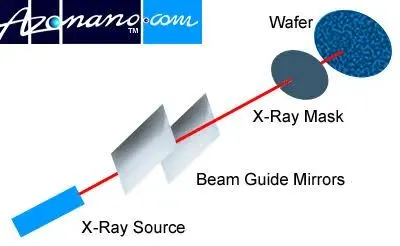
In our solar system, we know the asteroid belt is teeming with curious, ancient objects. Now, scientists just peered into another solar system and found two of these belts in the inner system, along with a third farther out.
Astronomers used the most powerful instrument in space ever deployed, the James Webb Space Telescope, to reveal more rings around the young star Fomalhaut, located relatively close (in space terms) at some 25 light-years away(opens in a new tab). The research was recently published(opens in a new tab) in the science journal Nature Astronomy.
Previously, other strong telescopes, like the school bus-sized Hubble, observed Fomalhaut’s extremely distant outer ring, which lies 14 billion miles away from the star. Yet Webb, which views a type of light called infrared — light that’s invisible to our eyes but a common and potent source of energy — found two inner belts.
“Where Webb really excels is that we’re able to physically resolve the thermal glow from dust in those inner regions. So you can see inner belts that we could never see before,” Schuyler Wolff, an astronomer at the University of Arizona who worked on the research, said in a statement(opens in a new tab).
Webb telescope just found massive objects that shouldn’t exist in deep space
In the image below, you can see the three rings.

The James Webb Space Telescope captured three rings around the star Fomalhaut.
Credit: NASA / ESA / CSA / A. Gáspár (University of Arizona). Image processing: A. Pagan (STScI)
Why asteroid belt discoveries are exciting
The two inner belts around Fomalhaut are rocky, dusty rings, formed by large objects colliding (collisions are common in solar systems, especially younger ones). Yet their stable ring-like structures reveal the existence of other intriguing objects around the star.
“These belts most likely are carved by the gravitational forces produced by unseen planets,” NASA explains. As an example, the space agency points out that the gas giant Jupiter “corrals the asteroid belt,” as the massive planet keeps the orbits of these space rocks largely locked in place.
“The belts around Fomalhaut are kind of a mystery novel: Where are the planets?” George Rieke, an astronomer at the University of Arizona and the U.S. science lead for Webb’s Mid-Infrared Instrument, said in a statement. “I think it’s not a very big leap to say there’s probably a really interesting planetary system around the star.”
“I think it’s not a very big leap to say there’s probably a really interesting planetary system around the star.”
“We definitely didn’t expect the more complex structure with the second intermediate belt and then the broader asteroid belt,” Wolff added. “That structure is very exciting because any time an astronomer sees a gap and rings in a disk, they say, ‘There could be an embedded planet shaping the rings!'”
Webb astronomers will continue peering into solar systems like Fomalhaut, places that will better reveal what other planetary systems in the galaxy are like, and what might exist there.
The Webb telescope’s powerful abilities
The Webb telescope, a scientific collaboration between NASA, the ESA, and the Canadian Space Agency, is designed to peer into the deepest cosmos and reveal unprecedented insights about the early universe. But it’s also peering at intriguing planets in our galaxy, and even the planets in our solar system.
Want more science and tech news delivered straight to your inbox? Sign up for Mashable’s Top Stories newsletter today.
Here’s how Webb is achieving unparalleled things, and likely will for decades:
-
Giant mirror: Webb’s mirror, which captures light, is over 21 feet across. That’s over two and a half times larger than the Hubble Space Telescope’s mirror. Capturing more light allows Webb to see more distant, ancient objects. As described above, the telescope is peering at stars and galaxies that formed over 13 billion years ago, just a few hundred million years after the Big Bang.
“We’re going to see the very first stars and galaxies that ever formed,” Jean Creighton, an astronomer and the director of the Manfred Olson Planetarium at the University of Wisconsin–Milwaukee, told Mashable in 2021.
-
Infrared view: Unlike Hubble, which largely views light that’s visible to us, Webb is primarily an infrared telescope, meaning it views light in the infrared spectrum. This allows us to see far more of the universe. Infrared has longer wavelengths(opens in a new tab) than visible light, so the light waves more efficiently slip through cosmic clouds; the light doesn’t as often collide with and get scattered by these densely packed particles. Ultimately, Webb’s infrared eyesight can penetrate places Hubble can’t.
“It lifts the veil,” said Creighton.
-
Peering into distant exoplanets: The Webb telescope carries specialized equipment called spectrometers(opens in a new tab) that will revolutionize our understanding of these far-off worlds. The instruments can decipher what molecules (such as water, carbon dioxide, and methane) exist in the atmospheres of distant exoplanets — be it gas giants or smaller rocky worlds. Webb will look at exoplanets in the Milky Way galaxy. Who knows what we’ll find.
“We might learn things we never thought about,” Mercedes López-Morales, an exoplanet researcher and astrophysicist at the Center for Astrophysics-Harvard & Smithsonian(opens in a new tab), told Mashable in 2021.
Already, astronomers have successfully found intriguing chemical reactions on a planet 700 light-years away, and the observatory has started looking at one of the most anticipated places in the cosmos: the rocky, Earth-sized planets of the TRAPPIST solar system. What’s out there?






